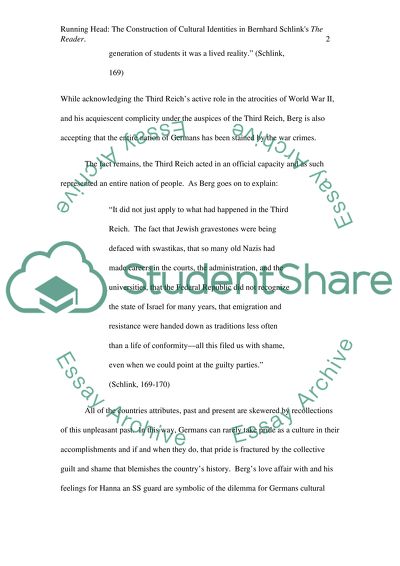Cite this document
(The Construction of Cultural Identities in Bernhard Schlink's The Book Report/Review, n.d.)
The Construction of Cultural Identities in Bernhard Schlink's The Book Report/Review. Retrieved from https://studentshare.org/culture/1547467-how-far-can-bernhard-schlinks-novel-the-reader-be-understood-as-an-examination-of-the-role-played-by-history-in-the-construction-of-cultural-identities
The Construction of Cultural Identities in Bernhard Schlink's The Book Report/Review. Retrieved from https://studentshare.org/culture/1547467-how-far-can-bernhard-schlinks-novel-the-reader-be-understood-as-an-examination-of-the-role-played-by-history-in-the-construction-of-cultural-identities
(The Construction of Cultural Identities in Bernhard Schlink'S The Book Report/Review)
The Construction of Cultural Identities in Bernhard Schlink'S The Book Report/Review. https://studentshare.org/culture/1547467-how-far-can-bernhard-schlinks-novel-the-reader-be-understood-as-an-examination-of-the-role-played-by-history-in-the-construction-of-cultural-identities.
The Construction of Cultural Identities in Bernhard Schlink'S The Book Report/Review. https://studentshare.org/culture/1547467-how-far-can-bernhard-schlinks-novel-the-reader-be-understood-as-an-examination-of-the-role-played-by-history-in-the-construction-of-cultural-identities.
“The Construction of Cultural Identities in Bernhard Schlink'S The Book Report/Review”. https://studentshare.org/culture/1547467-how-far-can-bernhard-schlinks-novel-the-reader-be-understood-as-an-examination-of-the-role-played-by-history-in-the-construction-of-cultural-identities.


